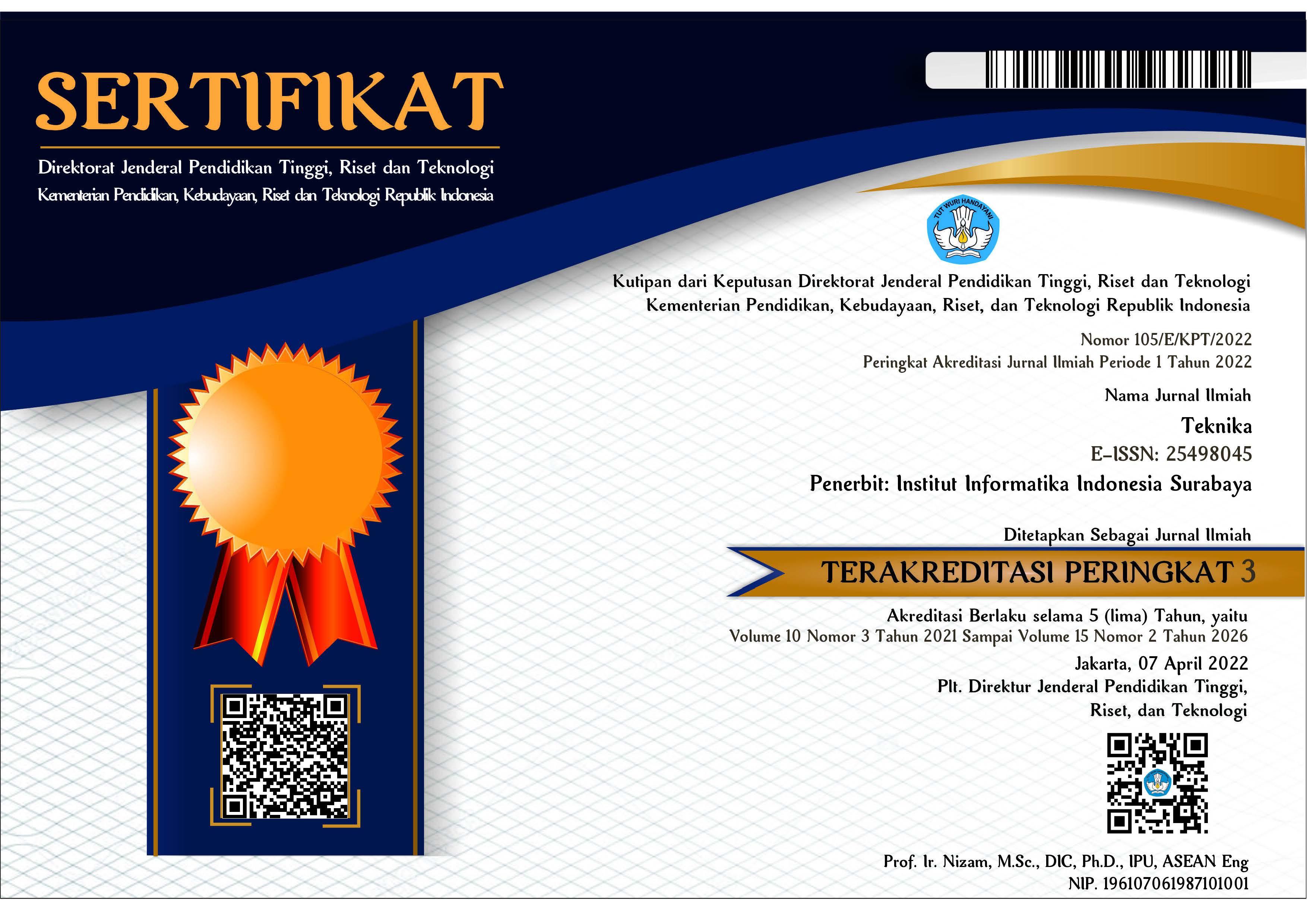Optimizing Deep Neural Networks Using ANOVA for Web Phishing Detection
DOI:
https://doi.org/10.34148/teknika.v13i1.758Keywords:
Web Phishing Detection, ANOVA, Deep Neural Networks, Feature Selection, OptimizingAbstract
Phishing attacks are crimes committed by sending spoofed Web URLs that appear to come from a legitimate organization in order to obtain another party's sensitive information, such as usernames, passwords, and other confidential data. The stolen information is then used to commit fraud, such as identity theft and financial fraud, and can cause reputational damage to the party that is the victim of the phishing attack. This can cause great harm to the victimized individual or organization. To overcome these problems, this research uses feature selection using ANOVA and Deep Neural Networks (DNN) to detect web phishing attacks. Feature selection is used to optimize the performance of the DNN model to achieve more accurate results. Based on the results of feature selection using ANOVA, there are 52 attributes that have a significant impact on web phishing attack detection. The next step is to implement DNN to build a web phishing attack detection model. The results of testing the web phishing detection model show that in the training phase, the accuracy value increased by 17.51% for the 80:20 dataset and 18.39% for the 70:30 dataset. During the testing phase, the accuracy value increased by 17.8% for the 80:20 dataset and 18.58% for the 70:30 dataset. The resulting recognition model shows consistent and reliable results not only during training, but also during testing in situations closer to real-world conditions. Conclusively, the use of ANOVA proves effective in mitigating less relevant features and contributing to the optimization of web phishing detection models.
Downloads
References
R. S. Moorthy, and Dr. P. Pabithab, “Optimal Detection of Phising Attack using SCA based K-NN,” Procedia Computer Science, vol. 171, pp. 1716-1725, 2020, doi: 10.1016/j.procs.2020.04.184.
T.O. Ojewumi et al. “Performance evaluation of machine learning tools for detection of phishing attacks on web pages.” Scientific African. Vol. 16, 2022, doi: 10.1016/j.sciaf.2022.e01165.
B. A. Tama and K. H. Rhee, “A Comparative Study of Phishing Websites ClassificationBased on Classifier Ensembles,” Journal of ultimedia Information System, vol. 5, no. 2, pp. 99-104, 2018, doi: 10.9717/JMIS.2018.5.2.99.
I. Saha, D. Sarma, R. J. Chakma, M. N. Alam, A. Sultana and S. Hossain, “Phishing Attacks Detection using Deep Learning Approach,” 2020 Third International Conference on Smart Systems and Inventive Technology (ICSSIT), Tirunelveli, India, 2020, pp. 1180-1185, doi: 10.1109/ICSSIT48917.2020.9214132.
V. Suganya, “A Review on Phishing Attacks and Various Anti Phishing Techniques,” International Journal of Computer Applications vol. 139, pp. 20-23, 2016.
M. Bahaghighat, M. Ghasemi, and F. Ozen, “A high-accuracy phishing website detection method based on machine learning,” Journal of Information Security and Applications, Elsevier, vol. 77, 2023, doi: 10.1016/j.jisa.2023.103553.
APWG Report 2018, “Phishing Activity Trends Report,” pp. 1-13, 2018.
APWG Report 2019, “Phishing Activity Trends Report,” pp. 1-13, 2019.
APWG Report 2020, “Phishing Activity Trends Report,” pp. 1-14, 2020.
APWG Report 2021, “Phishing Activity Trends Report,” pp. 1-15, 2021.
APWG Report 2022, “Phishing Activity Trends Report,” pp. 1-11, 2022.
IDADX Report, “Laporan Aktivitas Phishing Domain.ID,” 2022.
S.C. Jeeva and E.B. Rajsingh, “Intelligent Phishing URL Detection Using Association Rule Mining,” Human-Centric Computing and Information Sciences, Vol. 6, No. 1, pp. 1-19, 2016.
A. Hannousse and S. Yahiouche, “Towards Benchmark Datasets for Machine Learning based Website Phishing Detection: An Experimental Study,” arXiv:2010.12847, 2020, doi: 10.48550/arXiv.2010.12847
A. Jain, and B. Gupta, “Phish-safe: Url features-based phishing detection system using machine learning,” Cyber Security, pp. 467—474, Singapore: Springer Singapore, 2018, doi: 10.1007/978-981-10-8536-9_44
N. Zaini, et. al, “Phishing detection system using machine learning classifiers,” Indonesian Journal of Electrical Engineering and Computer Science, vol. 17, pp. 1165—1171, 2020.
J. Tan and Y. Tian, “Fuzzy Retrieval Algorithm for Film and Television Animation Resource Database based on Deep Neural Network,” Elsevier BV, Journal of Radiation Research and Applied Sciences, 2023, doi: 10.1016/j.jrras.2023.100675.
P. Yu, and X. Yan, “Stock Price Prediction based on Deep Neural Networks,” Neural Computing and Applications 32, pp. 1609—1628, 2020.
A. Faisal, and A. Subekti, “Deep Neural Network untuk Prediksi Stroke,” Jurnal Edukasi dan Penelitian Informatika, vol. 7, No 3, 2021.
Feng et al., "Using Deep Neural Network with Small Dataset to Predict Material Defects", Materials and Design Elsevier, vol. 162, pp. 300-310, 2019.
A. Wenda, “Support Vector Machine untuk Pengenalan Bentuk Manusia Menggunakan Kumpulan Fitur yang Dioptimalkan,” Jurnal Sains & Teknologi, vol. 11, no. 1, 2022, doi: 10.23887/jstundiksha.v11i1.44437.























